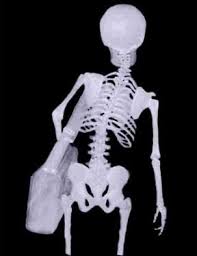Soldiers routinely carry between 50 and 100 pounds of gear i.e. body armor, weapons, flack vests, rucksacks, and ammo.
This weight is directly affecting their spine and increasing spine related problems for military men and women. Carrying gear weighing over 10% of a persons body weight is known to cause damage to the spine and vertebral discs. It is no surprise that the main complaint from soldiers returning home would be neck & back pain, followed by hip and knee problems. The VA has seen over 396,000 veterans already for these musculoskeletal problems, which is roughly 31% of the returning soldiers. It is assumed many more have not sought medical care or have gone to private medical center.
The Spine Maximum Load Restriction
The spine is made to hold a human being up right, and allow freedom of movement. Like any structure there are “maximum load restrictions”. When we increase the weight placed on the spine by more than 10% of our normal body weight it begins to stress and degenerate the vertebral discs that act like the shock absorbers between the spinal vertebrae. If these discs become worn and degenerated the spine can no longer function correctly. Compensation and adaptation sets into the spine and other structures such as the hips, knees, and muscles of the back.
Posture Misalingment Will Degenerate The Spine & Cause Back Pain.
An excess amount of weight on the spine puts the body into a compromised postural position to balance the weight. This causes the postural distortions patterns, which are known to degenerate the spine and cause back pain. Soldiers are trained to handle extreme situations. They are “mentally tough” and physically fit, however the spine can’t be trained to withstand these extreme loads. Forcing ones body to maintain extreme stress and weight bearing begins to slowly deteriorate the spine.
Anybody Overloaded With Weight Will Damage The Spine
A soldier may be tough and made to deal with the pain and stress, however, as they age, these traumas to the spine weaken the spine reducing them to canes, wheel chairs, and in some cases in ability to even get out of bed. The pain is traumatic and the damage is done. Soldiers often experience the most extreme situation in excess weight bearing, however, many of our population is suffering from the same thing. According to the Center for Disease Control 70% of adults are overweight with 35% being considered obese. This excess weight in the form of fat is placing the same stress on societies spines as well.
Carrying 15 Pounds or More Can Lead To Spinal Disease.
A backpack, military gear, or body fat for a long period of time will damage the spine. To know for sure if you are developing these postural distortion patterns get a Posture Diagnosis Online from the American Posture Institute.
6 Bits of Advice
Habits
1. Reduce The Weight.
The most obvious way to change the problem is to reduce the amount of  weight you carry. Make purses, bags, and etc. lighter. Soldiers, look for options to reduce your load, or exchange items with lighter options.
weight you carry. Make purses, bags, and etc. lighter. Soldiers, look for options to reduce your load, or exchange items with lighter options.
 weight you carry. Make purses, bags, and etc. lighter. Soldiers, look for options to reduce your load, or exchange items with lighter options.
weight you carry. Make purses, bags, and etc. lighter. Soldiers, look for options to reduce your load, or exchange items with lighter options.
2. Distribute The Weight Evenly
Extra weight should be evenly distributed on the body. Use two straps, one on both shoulders. Try to keep the weight as high up on the back as possible to reduce the stress on the low back. When possible use hip straps/support to help distribute the weight.
3. Maintain Proper Posture With Excess Weight.
Proper posture is crucial. Do not allow yourself to go into incorrect postural position. This will increase the stress on the muscles that protect your spine. Too much stress and these muscles give out and your spine takes the damage.
Rehabilitation
4. Strengthen The Postural Muscles
Core exercises will strengthen muscles that support the spine. Planking is an excellent exercise. Lay with your chest on the floor. Support your body weight on your toes and your elbows/forearms. Lift your body off the ground and maintain this position as long as possible.
5. Lose Weight.
Reduce extra body weight, which will remove stress from the spine and pressure from the vertebral discs.
Spinal Alignment
6. Spine Distraction Therapy
This therapy can be done at home to relieve stress on the vertebral discs. Lay with your upper body on a bed or soft surface. Let your legs hang off. The surface needs to be high enough that your knees don’t touch the ground. Allow gravity to pull your lower body down, which will expand the space between the vertebrae and allow the discs to return to a normal position.
By Dr. Alex Jimenez








